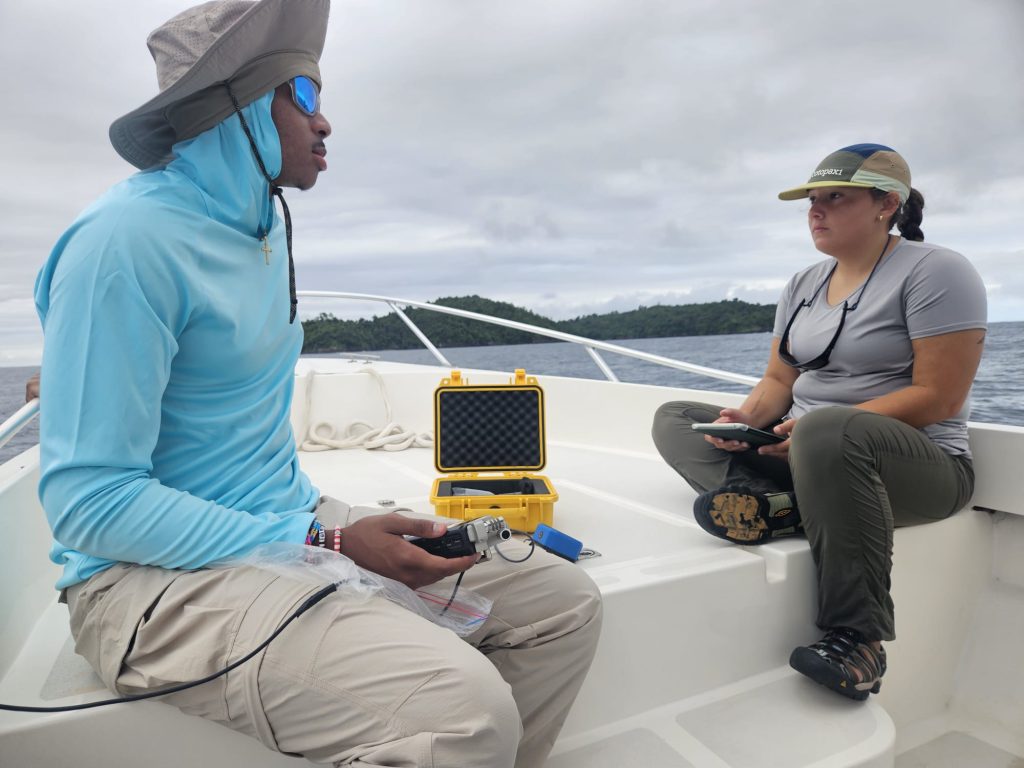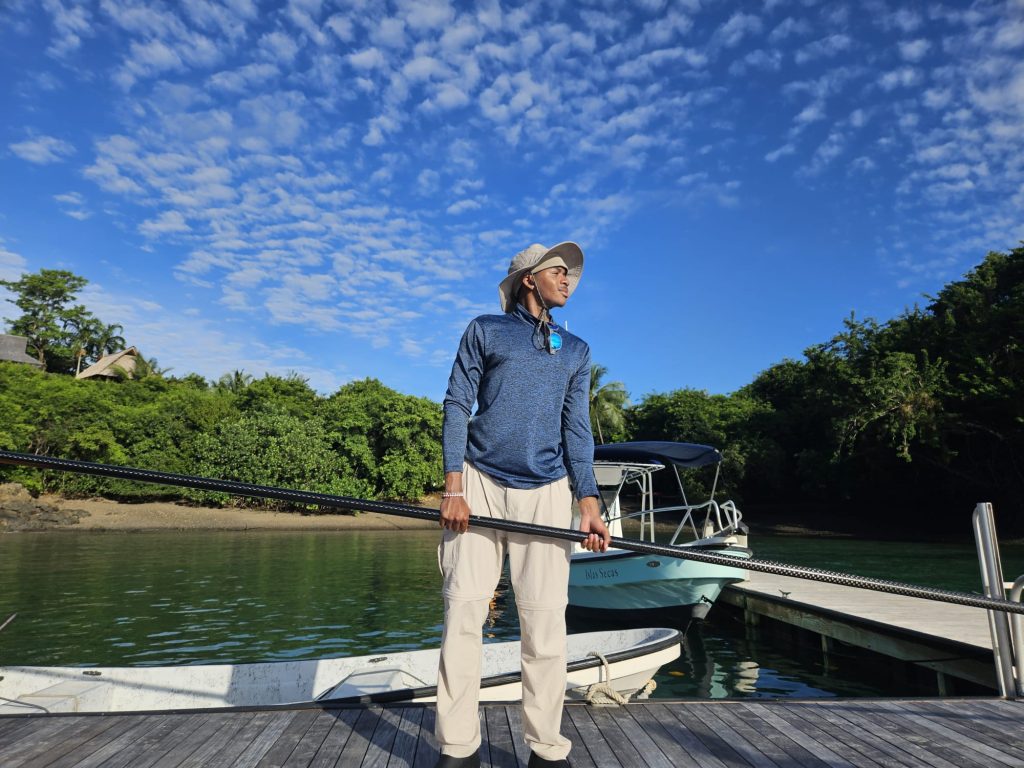By Nick Washington
I am part of a team that studies whales in their natural habitat. The most fascinating part of my job involves using a camera to photograph whale tails (also known as flukes) and document the collection of skin biopsy samples.
We use a crossbow to collect tissue samples from these majestic creatures. It looks like something out of an action movie, but it’s a vital research method that helps scientists learn more about whale health, genetics, and environmental impacts on their populations. The process of taking a biopsy is quite simple. First, we locate the whales, which often means spending hours on a boat scanning the horizon looking for splashes or blows when the whales come to the surface. Once we spot them, Professor Leslie prepares the crossbow with a specially designed dart that retrieves a small tissue sample without harming the whale. The dart bounces off the whale's thick skin, collecting a tiny piece of tissue before floating back to the surface. We then retrieve the dart and store the sample for analysis.
This data helps us track changes in the environment, monitor the impact of human activities, and develop conservation strategies. My internship has given me hands-on experience in marine biology and an appreciation for the delicate balance of our ecosystems.




